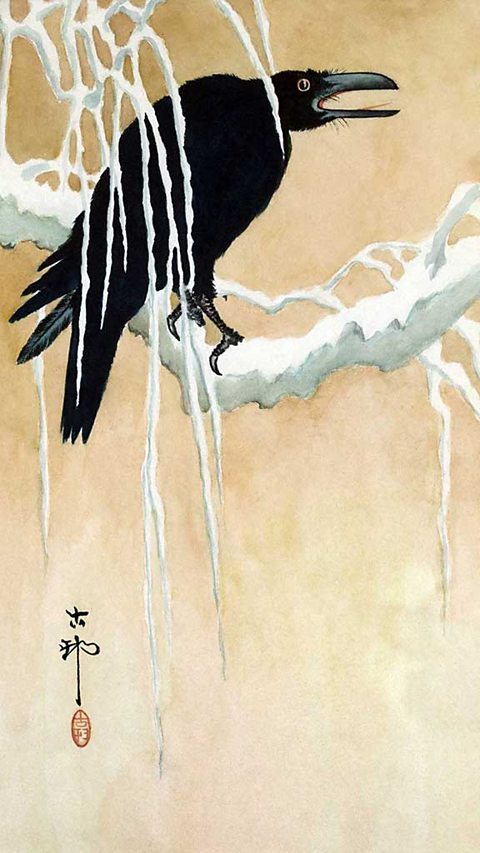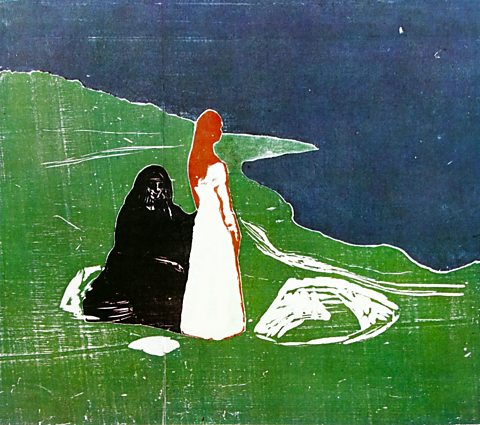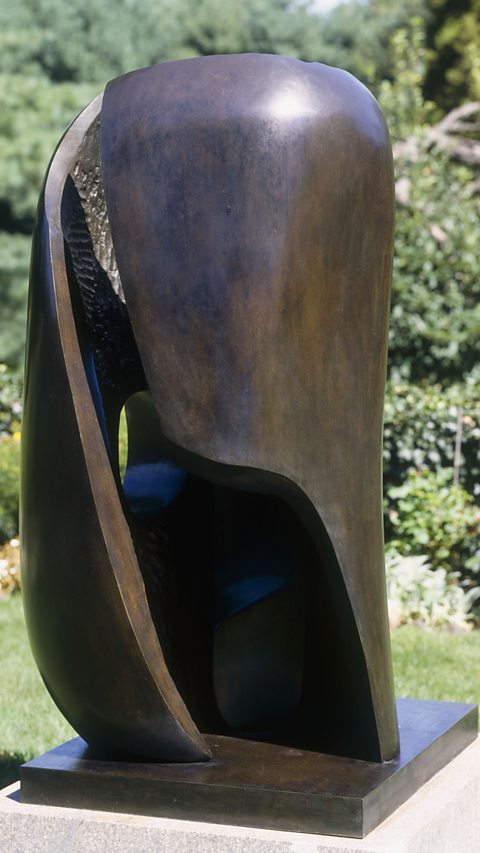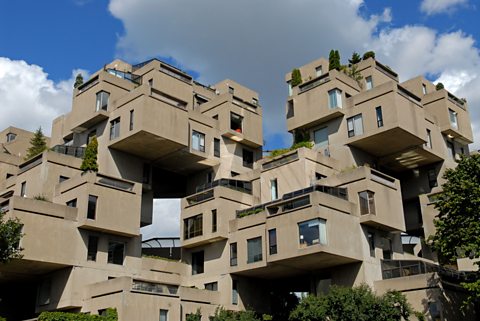Positive and negative space
Whether real or implied, space can be positive or negative. Positive space is taken up by objects. Negative space is the empty space around and between objects.

In Blackbird in Snow, the bird and branches take up positive space in the top half of the frame.
The bottom half of the composition is almost entirely negative space. This creates a sense of height, suggesting that we are looking up at a bird in a tree above us.
The negative space also draws our attention to the thin, vertical forms of snowy branches hanging down through the image.


In the woodcut Women on the Shore (Edvard Munch, 1898) the young woman in white and the older woman in black take up positive space.
The green land they are on and the dark blue sea behind them suggest negative space.
The figures are positioned to the left of frame with the young woman looking to the right, as if out to sea.
The large area of negative space she is staring into suggests emptiness and creates a sense of melancholy or sadness.


Barbara Hepworth explored ideas of positive and negative space in many of her sculptures.
She often pierced solid masses of stone, wood and plaster with holes to create abstract, empty spaces.
In Hollow Form with Inner Form (1968) Hepworth has created a bronze form that takes up positive space.
The metal has been cast so that it is split open, revealing the empty space inside. Rather than just a solid mass, the positive space seems like a casing that defines the negative space inside.


Habitat 67 is a housing development in Montreal made from prefabricatedAlready made. Prefabricated parts of a building have already been made and can be quickly assembled on site. cube-shaped units. The cubes take up positive space.
Rather than stacking the cubes into one larger mass, the architect has arranged them to create gaps in between. These gaps are negative space. They help break up the structure, create circulation spaceThe routes and spaces through which people move around a building. and allow light and air to reach more parts of the project, so that each home can have its own roof garden.